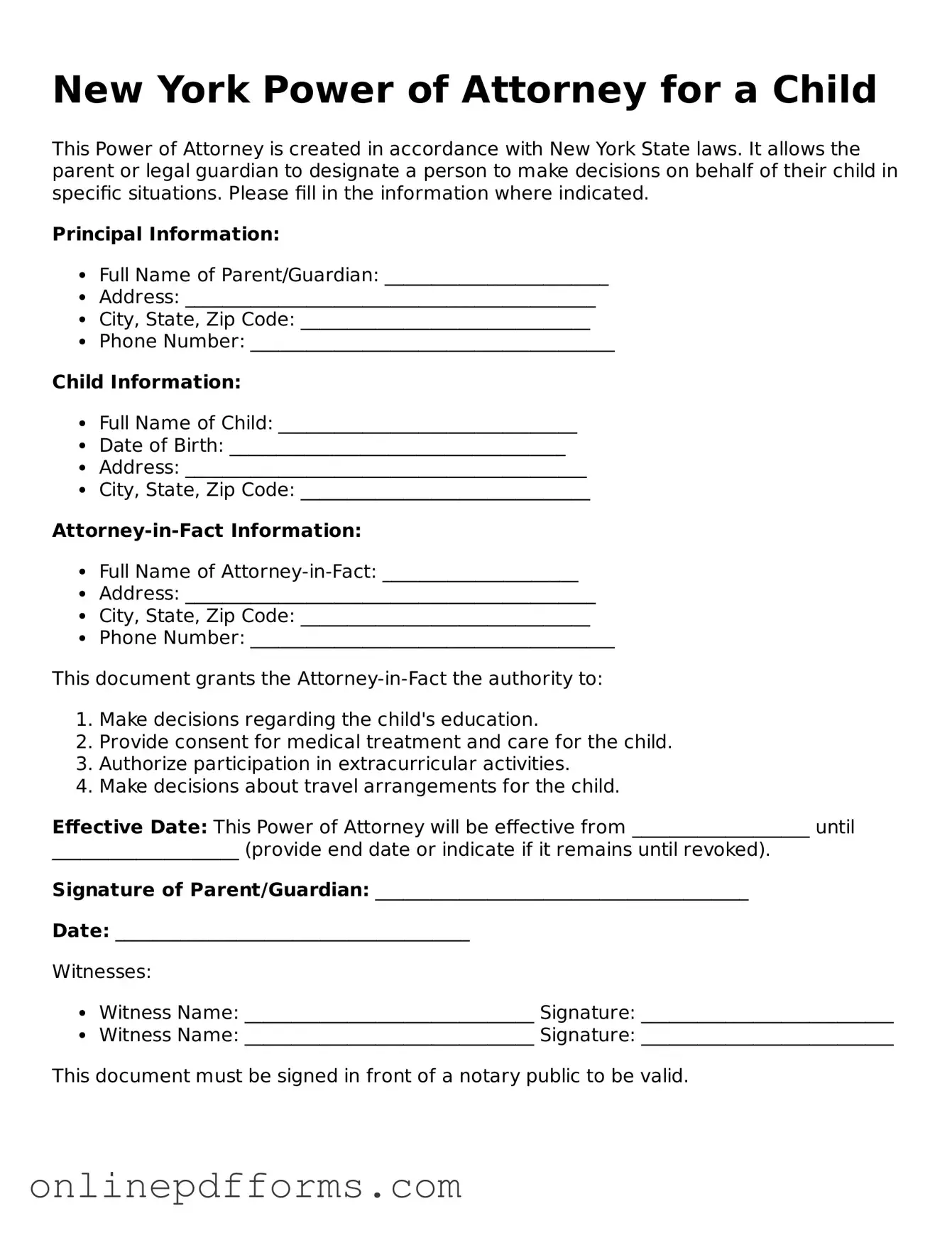The New York Guardianship Form is similar to the Power of Attorney for a Child in that it allows an adult to make decisions on behalf of a minor. However, while the Power of Attorney grants temporary authority for specific tasks, the Guardianship Form establishes a more permanent legal relationship. This document is often used when a parent is unable to care for a child due to illness or other circumstances. It provides the guardian with the authority to make significant decisions regarding the child's welfare, education, and medical care.
The Child Custody Agreement also shares similarities with the Power of Attorney for a Child. Both documents involve the care and decision-making for a minor. However, a Child Custody Agreement is typically used in divorce or separation situations to outline the arrangements for a child's living situation and visitation rights. Unlike the Power of Attorney, which can be temporary and does not require court approval, a Child Custody Agreement is usually formalized through the court system, ensuring that both parents' rights and responsibilities are clearly defined.
The Medical Authorization Form is another document that parallels the Power of Attorney for a Child. This form specifically allows a designated adult to make medical decisions for a child in the event that the parent is unavailable. While the Power of Attorney can cover a broader range of decisions, the Medical Authorization Form is focused solely on health-related matters. It is crucial for parents to have this document in place, especially in emergencies, to ensure that their child receives timely medical care.
The Temporary Guardianship Agreement is closely related to the Power of Attorney for a Child, as it also allows an adult to take care of a child for a limited time. This agreement is often used when parents need to be away for a short period, such as during a deployment or travel. The key difference lies in the fact that a Temporary Guardianship Agreement may require court approval, depending on the duration and circumstances, whereas the Power of Attorney can be executed without such formalities.
For those entering a lending agreement, understanding a Promissory Note is essential for ensuring that both parties' rights and obligations are clearly defined. You can find detailed information about this important document at understanding the Promissory Note essentials.
Lastly, the Adoption Consent Form bears some resemblance to the Power of Attorney for a Child. Both documents involve the legal rights of a child, but they serve very different purposes. An Adoption Consent Form is used when a parent voluntarily relinquishes their rights to allow another individual or couple to adopt their child. In contrast, the Power of Attorney for a Child does not terminate parental rights; it simply grants temporary authority to another adult for specific decisions. Understanding these distinctions is crucial for any parent considering these legal options.
